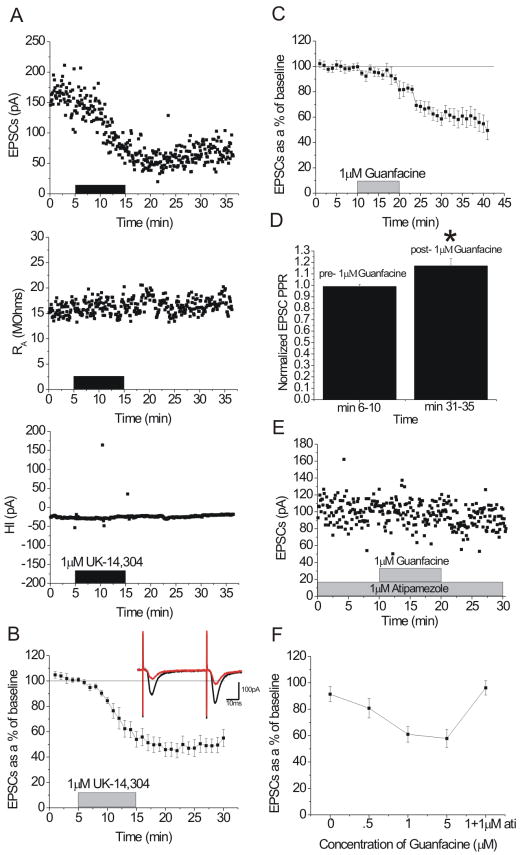Figure 3.
α2-AR agonists depress excitatory transmission in the dorsal BNST (dBNST). A) Representative experiment showing the effect of 1 μM UK-14,304 on excitatory transmission in the dBNST. pA = pico-amps, HI = holding current, RA = access resistance. B) 1 μM UK-14,304 depresses excitatory transmission in the dBNST (n = 9). Inset: representative 5 min average traces pre (black)- and post (red)-UK-14,304. C) 1 μM guanfacine depresses excitatory transmission in the dBNST (n = 9). D) 5 min average paired-pulse ratios pre- and post- 1 μM guanfacine. E) Representative experiment showing the effect of 1 μM guanfacine in the presence of 1 μM atipamezole in the dBNST. F) Dose-response curve for effect of guanfacine on excitatory transmission in the dBNST (n = 3 vehicle; n = 9, 500 nM; n = 9, 1 μM; n = 10, 5 μM), also effect of 1 μM guanfacine in the presence of 1 μM atipamezole (n = 4).

